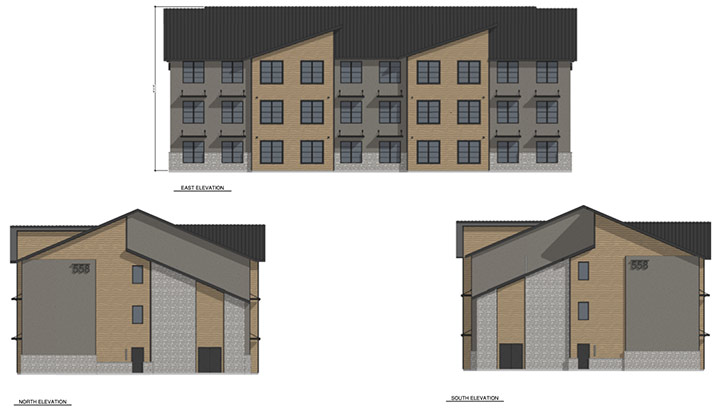A perfect storm.
A Daily Post reader sent me a link yesterday, to an thoughtful op-ed by real estate commentator John Wake in Forbes magazine, titled, “The Real Reason House Prices Are Skyrocketing: What The Real Estate Industry Won’t Tell You.” You can read the article here. I’m always interested in what people won’t tell us.
Mr. Wake’s theory boils down to, essentially, a significant change in the real estate market since 2006. When home prices in many communities crashed during the Great Recession, about 6.3 million American families lost their homes to foreclosure between 2006 and 2016. Here in Archuleta County, average home values dropped by about 30%. The construction industry here nearly dried up because homes could not be built and sold at a profit.
Smart investors understood, however, that home prices were bound to recover. And the only people with money — practically speaking — were investors.
These investors purchased homes as ‘investments’ either to hold onto them, expecting the values to increase so they could sell at a profit… or expecting the rental market to head for the stratosphere — which did happen, resulting in record profits for landlords … or else converting former residential homes into profitable, commercial VRBO vacation rentals.
While these homes were getting pulled out of the workforce residential market, relatively few new homes were getting built, due to a cratered construction industry.
A shortage of homes for sale was virtually guaranteed an generate an imbalance of ‘supply and demand’, with the supply unable to meet the demand, and leading to skyrocketing home prices.
A perfect storm, you might say. A perfect payoff for wealthy and upper-middle-class investors, and a perfect disaster for working families.
At the conclusion of lengthy public testimony and commissioners’ debate, the Town Planning Commission — Peter Hurley, Peter Adams, Kristen McCollam, Chris Pitcher, and Mark Weiler — voted 4-to-1 to recommend a 28-unit apartment complex be designed to occupy the northeast corner of our existing South Pagosa Park. Commissioner Pitcher, around the corner from the park, voted ‘No’.
The Commission recommendation specifies that the complex be designed — by the potential developer, Texas-based partnership Servitas — to preserve access through the 7th/8th Street alley, which was shown blocked off in the drawing presented at the Tuesday, April 12, Planning Commission meeting.

Following that lengthy debate, two additional projects proposed by Servitas were recommended to Town Council by unanimous votes, with very little discussion.
One project is slated for the corner of Apache and South 5th Streets, a neighborhood that features a mix of modular homes and high-end vacation rentals. The preliminary sketches show twelve small two-story town homes on a 1/2 acre lot.
The third proposed project would be a three-story apartment building located adjacent to Town Hall, on the corner of Apache Street and Hot Springs Boulevard.

All three projects require ‘density bonuses’ because they exceed the ‘dwelling-units-per-acre’ limits established in the current Land Use and Development Code (LUDC). But the Town Council amended the LUDC in late 2020 — via Ordinance 942 — to give themselves the authority to waive LUDC requirements whenever the mood strikes.
In the case of the South Pagosa Park project and the Hot Springs Boulevard project, the density recommended by the Planning Commission is about twice the density allowed by the LUDC.
I personally find the idea of density limits rather fascinating. Back in 2017, the Town received a report on Pagosa’s housing crisis from Washington, DC-based Smart Growth America. (We discussed this study at some length, last month, in a Daily Post editorial.) The Smart Growth study broke down the financial implications of low-density vs. high-density development, with a particular focus on the financial health of local governments… and recommended that the Town allow the community to build out at higher densities in the future.
But the Town’s LUDC — and the County government’s Land Use Regulations as well — were specifically written to limit density, in order to align future development with the status quo… with what’s already ‘on the ground’.
Which is to say, the current LUDC is in apparent conflict with recommendations for a financially-viable community. The way Pagosa built out over the past 100 years is no longer a practical or affordable option… unless we want to end up like Aspen, Vail and Telluride, as another mountain town where only millionaires can afford to live.
Now that the Town government is seriously trying to address our housing crisis, caused in part by those very same density limitations, the Planning Commission was basically admitting that we will not solve our housing problem unless we ignore the LUDC’s density rules.
Curiously enough, the Town is currently in the midst of rewriting its LUDC. Will some new (more sensible?) density regulations appear in the revised Code? Only their hairdresser know for sure.
A couple of important questions were not answered fully prior to the voting.
How much will Servitas spend building these 64 units?
Will the rents actually be affordable to the majority of our workforce, knowing that a typical working household earns less than 100% of the Area Median Income?
Will the Town government be expected to subsidize these units on a perpetual basis?
Since the taxpayers are donating free land to the company, it feels, to me, unconscionable that the taxpayers — and the Planning Commission — have been kept in the dark about the financial details.
Meanwhile, the recommendations coming from the five voting members of the Planning Commission are just that: recommendations. Those recommendations were, in turn, based upon recommendations made to the Planning Commission by Town staff. In the end, the seven members of the Pagosa Springs Town Council, and Servitas, will make the final decisions about what Servitas will build, and where, and how the financing will be shared.
As I’ve mentioned in previous editorials, the 2021 Root Policy Research report on the housing crisis in southwest Colorado estimated that Archuleta County is lacking 800 housing units for working families.
Yet the county still struggled to add enough units for workforce. An estimated 800 additional units for permanent residents were needed to fully accommodate job growth and minimize in-commuting.
64 new dwelling units, to be built over the next two years, might seem like a big number. In fact, it might only scratch the surface.

